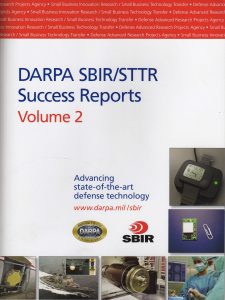The pendulum swings
 In the beginning there was the mainframe –highly available, centralized & virtualized computers that could scale to handle multiple workload instances on a timesharing basis. Then we saw the emergence of client server / distributed computing architectures, as business departments and individual users sought to take more control of their compute resources and remove the constraints of using shared resources – computers moved from the datacenter to the server room and the desk. Next came the Cloud – delivering centralized, scalable, shared, virtualized and metered services from large datacenters (sound familiar?). At the same time we see the appearance and rapid evolution of the mobile phone as it becomes the Smartphone and tablet, giving rise to a human-centric mobile computation & communication environment.
In the beginning there was the mainframe –highly available, centralized & virtualized computers that could scale to handle multiple workload instances on a timesharing basis. Then we saw the emergence of client server / distributed computing architectures, as business departments and individual users sought to take more control of their compute resources and remove the constraints of using shared resources – computers moved from the datacenter to the server room and the desk. Next came the Cloud – delivering centralized, scalable, shared, virtualized and metered services from large datacenters (sound familiar?). At the same time we see the appearance and rapid evolution of the mobile phone as it becomes the Smartphone and tablet, giving rise to a human-centric mobile computation & communication environment.
Now, with the increasing computing power of Smartphones and tablets and the advent of the Internet of Things (IoT) with many more connected objects than people on the planet, we see another shift. The location and delivery mechanism of computing and storage power makes another pendulum swing as the total compute capacity “at the edge” overtakes that which is centrally controlled and managed in datacenters. The edges of the Cloud are getting blurred – enter the era of “Fog computing”!
Connected Everything
But there is something of a fundamental difference in this new paradigm. Firstly, the sheer physical number of components comprising the Internet of Everything (IoE: Internet of People + Internet of Things) is predicted to rise at a staggering rate – some estimates suggest up to 50 billion devices by 2020. Secondly, in a lot of cases the individual IoT objects will have somewhat limited compute capabilities and may be producers of apparently mundane data e.g. Smart Thermostat readings. But this individual limited computing capacity will be complimented and supplemented by connection to other objects in a community giving “birth” to the IoT swarm. A co-operative interaction between individual entities – each with their own autonomy, but working together in harmony for the benefit of the collective community and possibly with the potential for interaction with “connected people”.
A Lesson from Nature
To explain further, consider where we see such behavior in nature: Flocks of birds fly in formation for aerodynamic efficiency, greatly increasing possible flying distances; Bees attack in swarms as a means of defense and share intelligence about where to collect pollen; and ants work together in colonies to move objects that would otherwise be impossible.
We already see “swarm” behavior of this type at work in the world of social media:
Content goes viral as relationship networks are used to cascade information of interest. Things that in isolation would be unlikely to create that much of an impact, suddenly become hot topics.
Crowd funding can raise $100k’s for individuals in need of costly medical help. The “Swarm” makes possible something that otherwise would not happen.
Government policies are influenced by the weight of public opinion expressed through social media channels.
Translate this behavior to the world of connected objects and we see some exciting possibilities:
“Swarms” of driverless cars interact to move safely and efficiently at speeds not possible if controlled in isolation. Vehicles join or leave the swarm as required, contributing their own localized insight to traffic and environmental conditions. Connected soldiers or emergency services personnel share intelligence, access expertise and refine mission parameters without necessarily having to maintain connection back to base. Manufacturing facilities autonomously tune their outputs according to insights gleaned from the connected swarm that reflects the status of a product’s end to end supply chain.
So What for business?
Future business models will be dependent on operational processes that work across the traditional boundaries of organizations, they will need to be adaptive, agile and collaborative. Swarm connections could allow interactions to change according to context, creating dynamic eco-systems of cyber-physical devices, each adding to the collective capability and insight.
We already see smartphone apps that allow Bluetooth meshed networks to establish internet connectivity for devices without direct WiFi connectivity. Smart devices interacting in such a way can bring collective capability to the swarm that might be even greater than the sum of the individual parts. This means that connected objects in the Internet of Things only need to have certain functional capabilities – so long as they are able to join a swarm community that is able to fill the gaps.
Of course there are many considerations that have to be addressed including: determining the legitimacy of an object to join a given swarm; how security and privacy of interactions will be managed; and how to avoid swarm behaviors being used for malicious intent. But could a swarm itself be the means of regulating its behavior through consensus responses? – much like the validation of cryptocurrency public ledgers.


